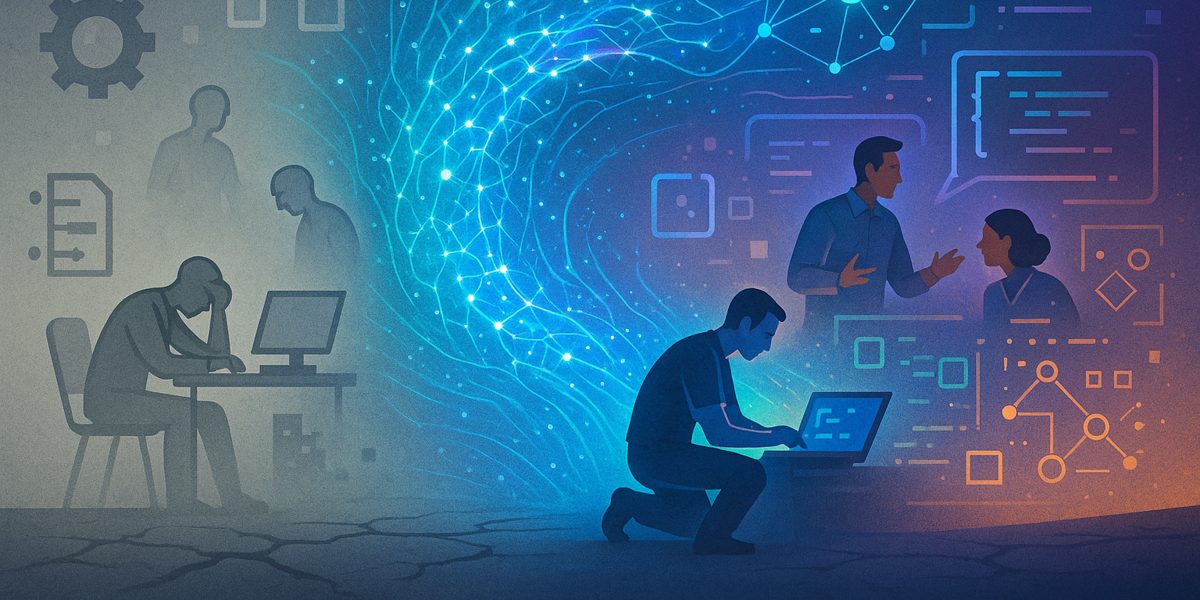AI's rapid rise is reshaping the value of human skills and software. As the pre-AI-era book "Be Obsessed or Be Average" suggests, success requires exceptionality. AI is now capable of performing tasks once reserved for human workers, significantly impacting those whose previously valuable skills have become easily replicable. Entrepreneurial individuals are already using AI to boost output, needing fewer programmers for routine coding and fewer copywriters for standard content. This McKinsey report indicates that a number of business units particularly in the areas of services and supply chain management will need fewer workers as a direct result of the use of AI.
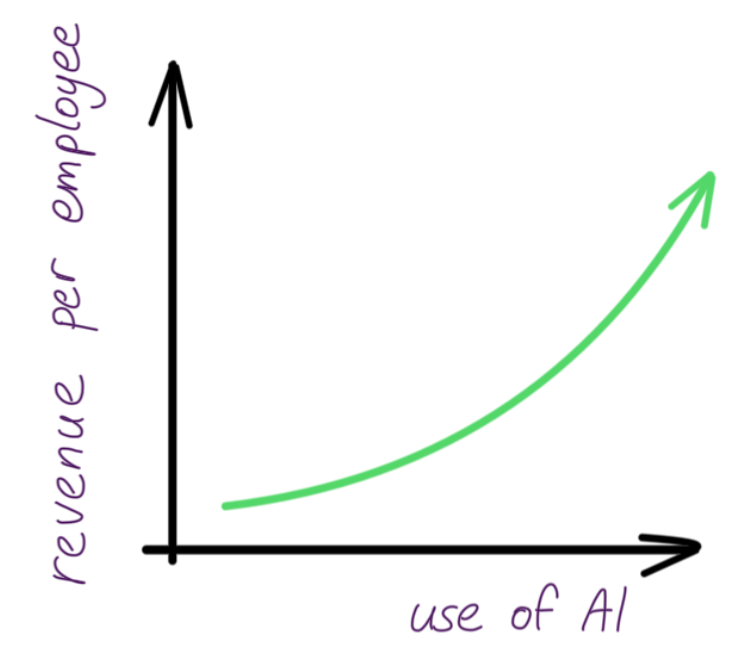
The Decline of the "Average" Worker
While not yet a complete replacement, AI is significantly reducing the demand for individuals in the lower 50% of knowledge work. For instance, AI-driven chatbots are increasingly handling customer inquiries, reducing the need for human customer service representatives. Similarly, AI-powered systems are automating data entry tasks once dependent on administrative workers. Some are predicting the end of the "laptop class" workers, suggesting that anyone whose physical presence at a workplace is not required can be replaced by a "drop-in" AI worker.
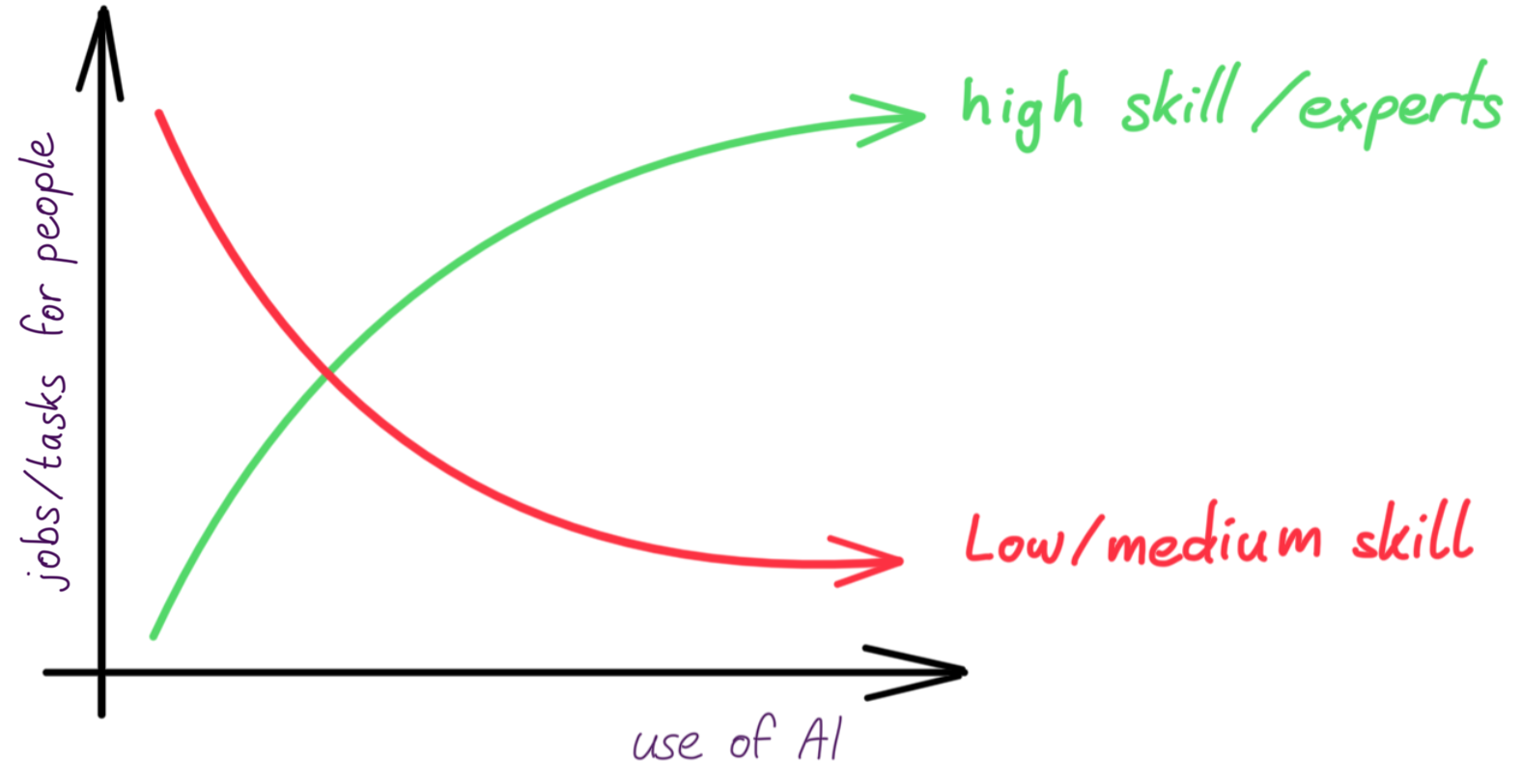
Impact on Software
This shift is not limited to human workers; it also extends to software. Just as AI is replacing workers with routine skills, it's also replacing basic software functions that were once essential for specific tasks, particularly evident in document automation. For years, businesses have used "mail-merge type" software for repetitive documents – the epitome of "average capable software" performing specific functions based on simple rules.
AI's ability to understand context, process natural language, and learn allows it to surpass traditional document automation. Imagine a system that understands content, tailors language, and suggests relevant information, rather than just inserting data into templates. AI is poised to make much of this existing, average document automation software obsolete.
However, AI, in its current form, doesn't replace human excellence: exceptional programmers and writers with creativity, critical thinking, and nuanced understanding. Similarly, AI doesn't replace exceptional, highly functional, and specialized software for complex, industry-specific tasks.
Superhuman strengths, superhuman weaknesses
The question remains: will AI eventually replace even these? While AI's neural networks offer human-like skills supercharged by extra capability, scalability, and vast knowledge, they also share human-like weaknesses: unpredictability, biases, ability to be manipulated – just to name a few. This leads to the crucial distinction between AI and deterministic traditional software, which produces the same output for the same input – a strength essential for reliability, such as in legally binding documents, produced by traditional document automation software.
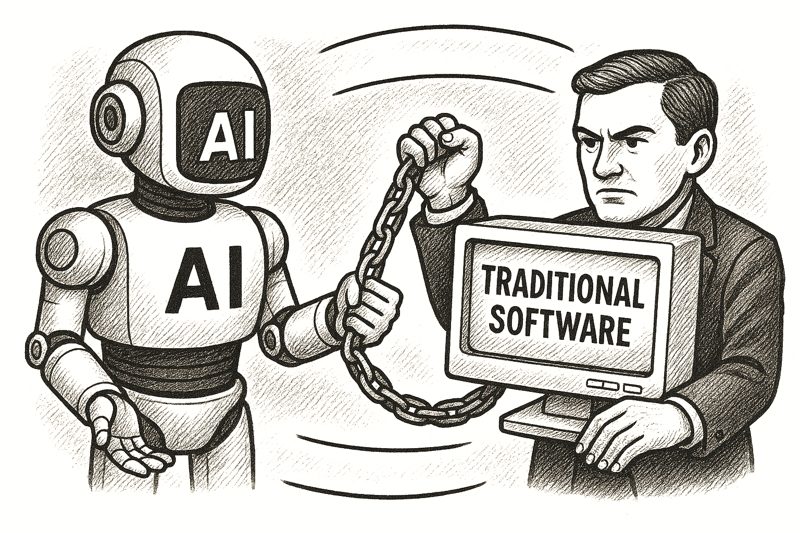
Who is the master and who is the slave? Image generated by ChatGPT.
The future likely involves a symbiotic relationship. Traditional software can serve as AI's deterministic "slave" for specific tasks. Conversely, it can act as the "master," orchestrating and comparing outputs from multiple AI systems for reliable, high-quality results.
Natural Selection by Artificial Intelligence
As a result, the software landscape will transform. While traditional software will remain vital in many areas, the market for basic, easily replicable software will shrink, being eaten at by AI. Software companies relying on unsophisticated efficiency models will need to adapt.
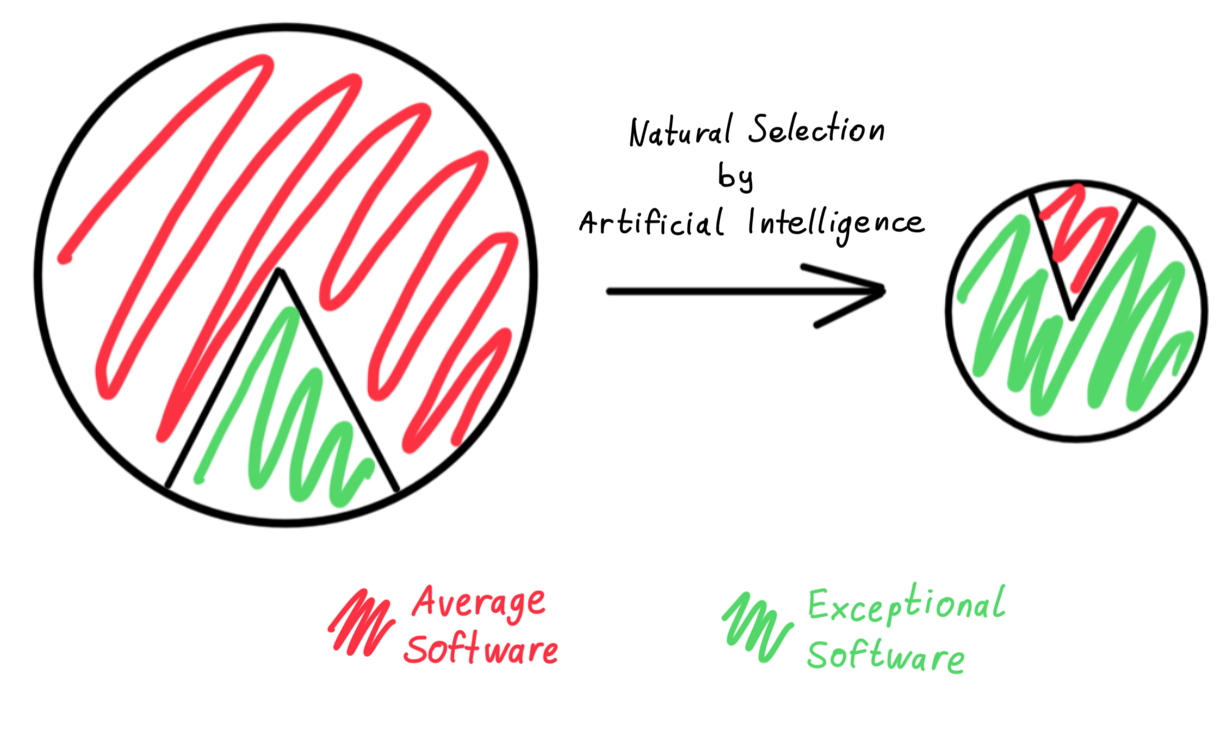
The era of making a living from average capabilities is ending. The future belongs to those who cultivate exceptional skills or build exceptional software and learn how to harness the AI's superpowers and mitigate its superweaknesses.
The twilight of the average is here; only those striving for excellence will thrive in the age of artificial intelligence.
Be Obsessed or be Obsolete.

